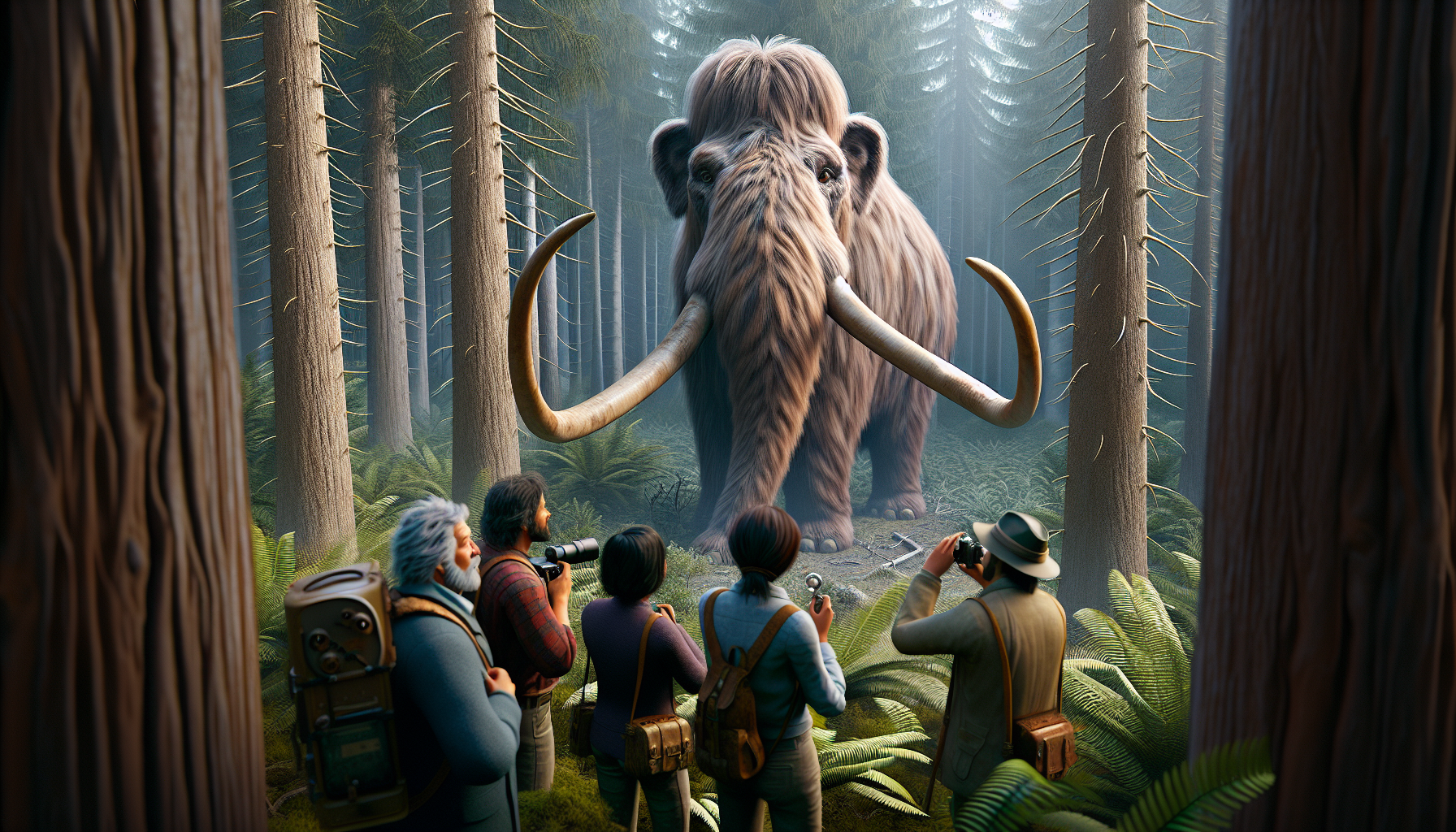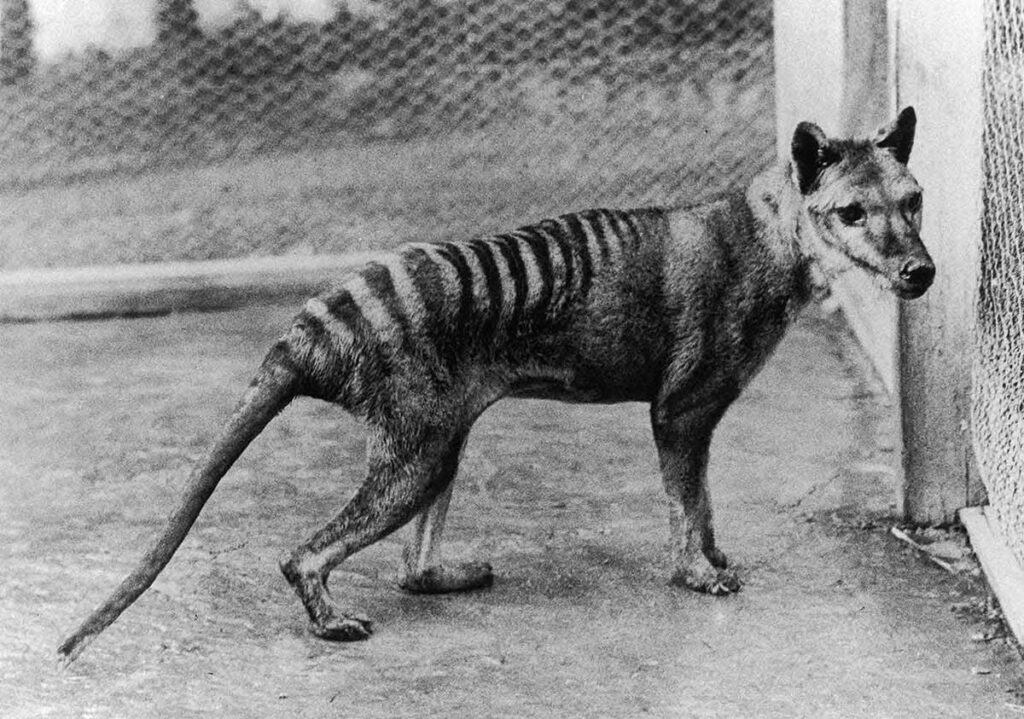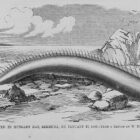Is De-Extinction a Good or a Bad Idea?

In the age of rapidly advancing biotechnology, de-extinction, the prospect of resurrecting extinct species from the annals of history, is no longer confined to the realms of science fiction.
At the forefront of this scientific frontier stand two iconic species: the woolly mammoth, a colossal behemoth of prehistoric times, and the thylacine, a marsupial predator that prowled the Australian wilderness until its tragic demise. These two species, separated by continents and epochs, represent the dual facets of the de-extinction debate: hope and apprehension, wonder and caution.
Should we bring back species long consigned to the embrace of history? And if so, what role will species like the mammoth and the thylacine play in the modern world?
What Exactly is De-Extinction?
De-extinction, also known as resurrection biology or species revivalism, encapsulates the process of reviving organisms that have either become extinct or closely resemble extinct species. This ambitious endeavor draws upon a collection of scientific disciplines, from genetics to reproductive biology, in a quest to breathe life into creatures long vanished from the Earth’s ecosystems.
De-extinction encompasses a spectrum of methodologies, each offering its own unique pathway to resurrection:
Cloning
Cloning, perhaps the most iconic method of de-extinction, entails the replication of an extinct species through the extraction and manipulation of preserved cells. By implanting the nucleus of a preserved cell into the egg of a living relative, scientists can theoretically generate offspring bearing the genetic identity of the extinct species. However, the viability of this method hinges upon the availability of well-preserved cells, limiting its applicability to recently extinct species.
Genome Editing
Genome editing, propelled by advancements in CRISPR/Cas systems, presents a tantalizing avenue for de-extinction. This method involves the direct manipulation of germ cells to imbue offspring with the genetic traits of extinct species. Unlike cloning, genome editing transcends the constraints of well-preserved tissues, enabling scientists to resurrect species even in the absence of intact cells.
Back Breeding
In the realm of de-extinction, back breeding emerges as a form of selective breeding aimed at resurrecting ancestral traits within extant populations. By selectively breeding individuals harboring dormant ancestral characteristics, scientists seek to recreate the phenotypic traits of extinct species. While this method holds promise, its success hinges upon the retention of ancestral traits within extant gene pools.
Iterative Evolution
Nature’s penchant for iteration offers a natural pathway to de-extinction. Iterative evolution, a process wherein different species evolve into almost identical creatures over time, presents an intriguing avenue for species revival. Through natural selection and adaptation, species may gradually converge upon the morphological and ecological characteristics of their extinct counterparts.
Advantages of De-Extinction
The allure of de-extinction extends far beyond the revival of ancient creatures. At its core lies the promise of technological advancements that could reverberate across various fields of science and conservation. By pushing the boundaries of genetic technologies, de-extinction endeavors could pave the way for innovative approaches to preventing the extinction of endangered species. The lessons learned from studying resurrected species could hold the key to unlocking cures for debilitating diseases, ushering in a new era of medical breakthroughs.
Resurrected species possess the potential to serve as emblematic figures in conservation initiatives. Acting as flagships for biodiversity, these species could galvanize public support and mobilize resources for the preservation of entire ecosystems. The reintroduction of extinct species could catalyze ecosystem restoration efforts, breathing new life into habitats ravaged by human development. Additionally, the act of reviving species driven to extinction by human activities may be viewed as a moral imperative, an opportunity to rectify the wrongs of the past and restore ecological balance.
Disadvantages of De-Extinction
The path to de-extinction is filled with complexities and ethical dilemma. The reintroduction of extinct species into contemporary ecosystems poses significant risks to extant species and their habitats. Ecological niches once occupied by extinct species may have been usurped by other organisms, rendering the resurrected species invasive or disruptive. Introducing an extinct species could trigger cascading effects, leading to the extinction of indigenous species or the disruption of delicate ecological balances.
The viability of de-extinct species in altered environments remains uncertain. Ecosystems into which these species are reintroduced may have undergone significant changes since their extinction, potentially rendering them inhospitable to resurrected populations. The reintroduction of de-extinct species may exacerbate existing threats, such as disease or predation, leading to their rapid demise once again.
Financial considerations also loom large in the realm of de-extinction. The costs associated with resurrecting species could divert resources from critical conservation efforts aimed at safeguarding extant biodiversity. Allocation of funds towards de-extinction endeavors may inadvertently weaken conservation initiatives, hastening the decline of endangered species already teetering on the brink of extinction.
The limitations of cloning techniques pose significant challenges to the faithful replication of extinct species. Cloned individuals may lack the genetic diversity necessary for long-term survival, potentially compromising their ability to thrive in their native habitats. Additionally, the reintroduction of de-extinct species may fail to fulfill their ecological roles, undermining the purported benefits of ecosystem restoration.

De-extinction Candidates
In the pursuit of de-extinction, scientists have identified several species as potential candidates for resurrection. These species, ranging from iconic megafauna to lesser-known organisms, hold the promise of revitalizing ecosystems and rekindling the wonder of lost biodiversity.
Woolly Mammoth
The woolly mammoth (Mammuthus primigenius) roamed the icy tundra of the Pleistocene epoch before succumbing to extinction thousands of years ago. Preserved soft tissue remains and DNA fragments have fueled hopes of resurrecting this iconic behemoth. Proposed methods include cloning and genome editing, with the aim of creating hybrid mammoth-elephant creatures capable of thriving in modern ecosystems.
Colossal Biosciences, a pioneering biotechnology company based in Dallas, recently made waves with a groundbreaking announcement. They revealed the successful production of a line of Asian elephant stem cells capable of transformation into the diverse cell types necessary for resurrecting the extinct giant—or at the very least, engineering a mammoth-like elephant adapted to thrive in cold climates.
Pyrenean Ibex
The Pyrenean ibex, scientifically known as Capra pyrenaica pyrenaica, was one of four subspecies of the Iberian ibex, endemic to the Pyrenees region of southwestern Europe. Tragically, it met its demise in the recent annals of history, marking a somber chapter in the ongoing saga of human-induced extinction.
Hunting pressure, exacerbated by burgeoning human populations, exacted a heavy toll on the once-abundant ibex. By the 19th and 20th centuries, the Pyrenean ibex faced dwindling numbers, its habitat fragmented and its future uncertain.
The cloning project, initiated with the tissue samples of the last surviving Pyrenean ibex named Celia, represented a beacon of optimism in the face of adversity. Spearheaded by scientists and researchers across Spain and France, the ambitious endeavor sought to resurrect the Pyrenean ibex from the ashes of extinction.
Aurochs
The aurochs (Bos primigenius), a mighty bovine species, once roamed across Eurasia, North Africa, and the Indian subcontinent. Once a keystone species in European ecosystems, this magnificent bovine roamed the landscapes with an aura of majesty, shaping the very fabric of the natural world. However, the lamentable echoes of extinction silenced its thundering hooves in 1627, leaving behind a void in the ecological tapestry of Europe.
Amidst the shadow of extinction, a glimmer of hope emerges on the horizon in the form of the Tauros Programme,a visionary initiative spearheaded by Rewilding Europe and the Taurus Foundation. At the heart of the Tauros Programme lies the innovative technique of back-breeding, a delicate balance of genetic manipulation and selective breeding. Drawing upon the genetic reservoir of ancient cattle breeds, scientists endeavor to sculpt a modern-day equivalent of the long-lost aurochs, imbued with its physical traits, behavioral nuances, and genetic heritage.
Quagga Project
The quagga (Equus quagga quagga), a subspecies of the plains zebra, once graced the grasslands of South Africa with its distinctive striped pattern. The genesis of the Quagga Project traces back to a tragic chapter in history, marred by greed and shortsightedness. Over a century ago, amidst the rugged expanse of the Karoo, the quagga, once a symbol of the African savanna, succumbed to the relentless onslaught of human exploitation. Hunted mercilessly for its perceived threat to livestock grazing, the quagga vanished from the landscape, its presence reduced to mere whispers in the wind.
At the heart of the Quagga Project lies the art of selective breeding, a process aimed at resurrecting the quagga’s iconic striping pattern. Drawing from a carefully curated founder population of southern Plains Zebras, scientists and conservationists endeavor to unlock the genetic treasure trove harbored within these majestic creatures. With each generation, the specter of the quagga grows ever closer, its genetic legacy poised for resurgence.
Thylacine
The thylacine (Thylacinus cynocephalus), colloquially known as the Tasmanian tiger, once prowled the dense forests of Australia and Tasmania. Driven to extinction in 1936, the thylacine succumbed to a combination of factors, including habitat loss, human persecution, and the relentless march of progress.
In the corridors of the University of Melbourne’s TIGRR (Thylacine Integrated Genetic Restoration Research) Lab, led by the Professor Andrew Pask, runs the quest to resurrect the thylacine from the ashes of oblivion. Armed with cutting-edge genetic technologies, Professor Pask and his painstakingly piece together fragments of thylacine DNA, salvaged from specimens preserved in museums and collections.
Utilizing the genetic blueprint of the thylacine, researchers explore the possibility of birthing a hybrid creature—a synthesis of thylacine DNA within the framework of a closely related species, the fat-tailed dunnart. Through this innovative approach, the boundaries of possibility blur, ushering in a new era of genetic restoration.










